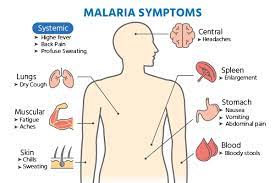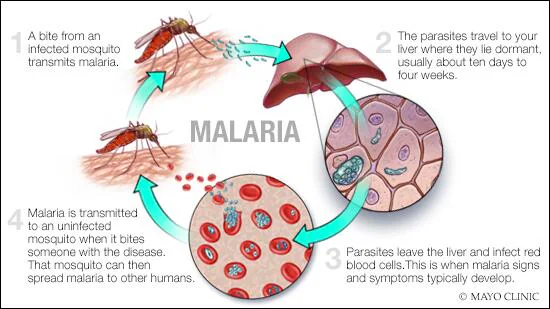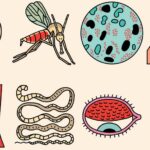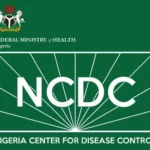Malaria: Understanding Symptoms, Treatment, Prevention and More
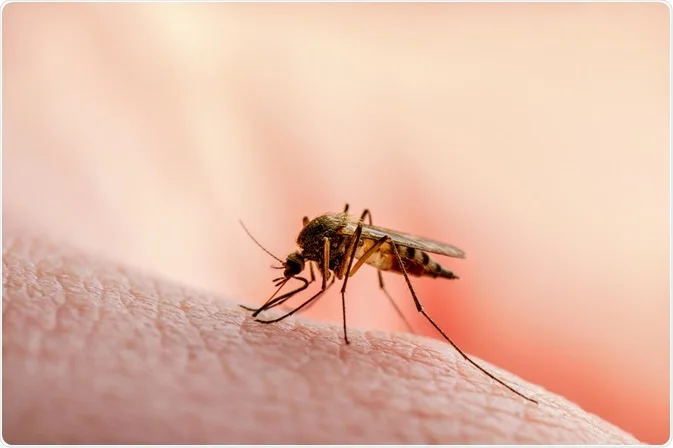
In this article, we will discuss the symptoms, treatment and prevention of malaria. Furthermore, we will highlight global efforts and challenges in eradicating malaria in our world
Malaria, a life-threatening mosquito-borne disease, continues to be a major global health concern, particularly in tropical and subtropical regions. With millions of cases reported each year, it’s crucial to understand the disease’s symptoms, treatment options, and prevention strategies. In this comprehensive article, we delve into the intricate details of malaria to provide a comprehensive overview.
Understanding Malaria
Malaria is caused by Plasmodium parasites, which are transmitted to humans through the bites of infected female Anopheles mosquitoes. Once inside the human body, the parasites travel to the liver, where they multiply and mature. They then enter the bloodstream, where they infect red blood cells, causing them to burst and releasing more parasites into the blood. This cyclical process is responsible for the characteristic symptoms of malaria.
Symptoms of Malaria
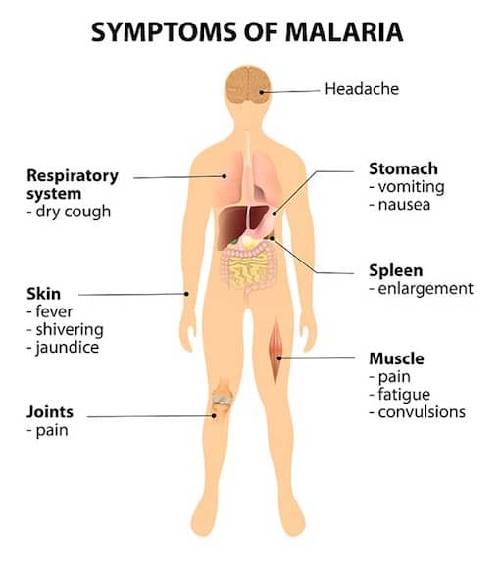
Malaria symptoms can vary in severity, and they usually appear within 7 to 30 days after being bitten by an infected mosquito. The most common symptoms include:
Fever
Fever is often the initial symptom of malaria and is usually accompanied by chills and sweating. The fever might be intermittent, with symptoms recurring in cycles.
Fatigue
Extreme tiredness and fatigue are common, as the parasite’s multiplication in red blood cells can lead to anemia.
Headache
Malaria-infected individuals often experience severe headaches, which can be persistent and throbbing.
Muscle and Joint Pain
Muscle and joint pain, often described as aching or even debilitating, is a hallmark symptom of malaria.
Nausea and Vomiting
Nausea, vomiting, and even diarrhea can occur as the infection progresses.
Anemia
The destruction of red blood cells can lead to anemia, resulting in weakness and paleness.
Jaundice
In severe cases, the infected person might develop jaundice, which is characterized by yellowing of the skin and eyes due to liver dysfunction.
Neurological Symptoms
In some cases, especially with the Plasmodium falciparum species, severe malaria can lead to neurological symptoms such as seizures and coma.
Treatment of Malaria
Diagnostic Considerations
Accurate diagnosis is essential for effective treatment. Microscopic examination of blood smears, rapid diagnostic tests (RDTs), and molecular techniques are commonly used to confirm the presence of Plasmodium parasites in a patient’s blood. Proper diagnosis helps guide the choice of treatment and prevent unnecessary use of antimalarial drugs.
Antimalarial Medications
There are several classes of antimalarial medications used for the treatment of the disease:
a. Artemisinin-Based Combination Therapies (ACTs): ACTs are the first-line treatment for uncomplicated falciparum malaria. They combine an artemisinin derivative, which rapidly reduces parasite count, with a longer-acting partner drug to eliminate residual parasites. Common partner drugs include mefloquine, lumefantrine, and amodiaquine.
b. Quinine and Quinidine: These drugs were once the mainstay of malaria treatment. They are still used for severe malaria cases, often in combination with antibiotics. However, due to their potential side effects and the emergence of more effective options, they are now reserved for specific situations.
c. Other Antimalarials: Other drugs like chloroquine and hydroxychloroquine were widely used in the past but have faced reduced efficacy due to parasite resistance. They are now limited to regions where the parasites remain susceptible.
Treatment Approaches
The treatment approach varies depending on the severity of the disease:
a. Uncomplicated Malaria: For uncomplicated malaria, especially caused by P. falciparum, ACTs are the recommended choice. These combinations improve treatment efficacy and reduce the development of drug resistance.
b. Severe Malaria: Severe malaria is a medical emergency and requires immediate treatment in a hospital setting. Intravenous or intramuscular administration of artesunate, followed by an ACT when the patient can tolerate oral medications, is the recommended approach.
c. Pregnancy-Related Malaria: Pregnant women are particularly vulnerable to malaria. Antimalarial treatment during pregnancy requires careful consideration due to potential risks to the fetus. Sulfadoxine-pyrimethamine (SP) is often used as an intermittent preventive treatment in malaria-endemic areas.
Drug Resistance and Challenges
Drug-resistant strains of Plasmodium parasites pose a significant challenge to malaria treatment. The emergence of resistance has led to changes in treatment guidelines and the need for continued research into new antimalarial drugs and combination therapies.
Emerging Treatment Approaches
Efforts are underway to develop new antimalarial drugs and alternative treatments:
a. Single-Dose Therapies: New antimalarials that can be administered in a single dose are being explored to improve treatment adherence.
b. Vaccines: The development of malaria vaccines, such as the RTS,S/AS01 vaccine, provides a novel approach to prevention and reduction of disease severity.
c. Genetic Approaches: Genetic modification of mosquitoes to make them resistant to the malaria parasite and gene editing of the parasite itself are innovative strategies being researched.
Prevention of Malaria
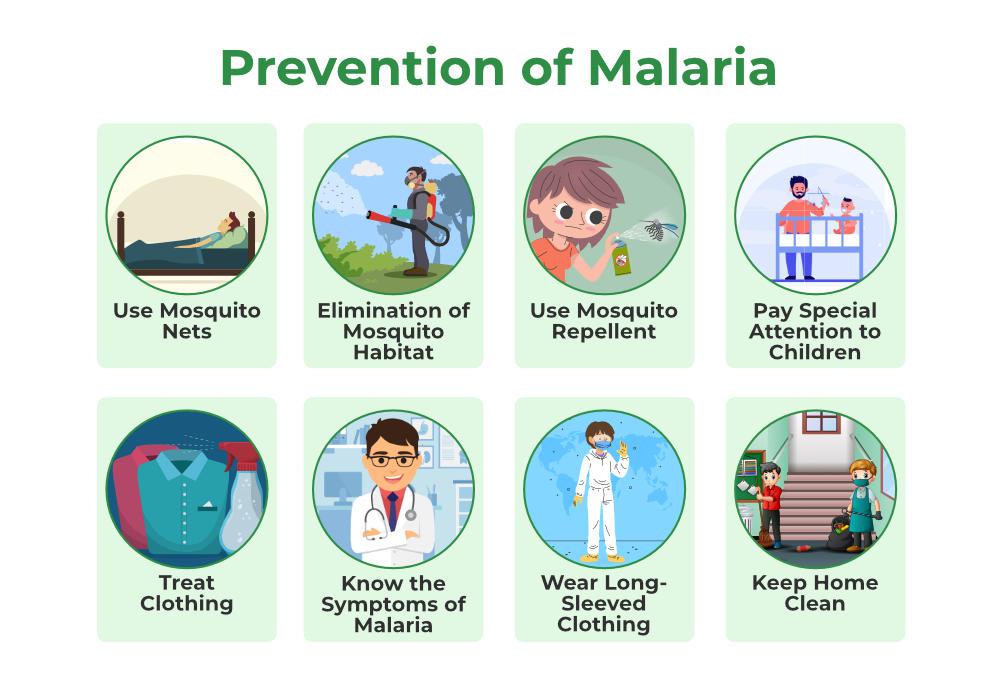
Preventing malaria involves a multi-faceted approach that targets both the mosquitoes and the parasites. Here are some key strategies:
Insecticide-Treated Bed Nets (ITNs)
Using bed nets treated with insecticides can significantly reduce the risk of mosquito bites during sleep, when Anopheles mosquitoes are most active.
Indoor Residual Spraying (IRS)
Indoor spraying of insecticides on walls and other surfaces can effectively kill mosquitoes that come into contact with the treated surfaces.
Antimalarial Medications
For individuals traveling to malaria-endemic regions, taking prophylactic antimalarial medications as prescribed can prevent infection.
Eliminating Mosquito Breeding Sites
Preventing the accumulation of standing water, where mosquitoes breed, can help control their population.
Vaccination
While no highly effective malaria vaccine is currently available, ongoing research has led to the development of the RTS,S/AS01 vaccine, which has shown some level of protection, particularly in young children.
Community Education
Raising awareness about malaria transmission, prevention, and early treatment-seeking behavior is essential in endemic areas.
Challenges and Future Prospects
Despite significant progress, malaria remains a global health challenge. Challenges include drug resistance, inadequate access to healthcare in certain regions, and the complexities of mosquito control. However, ongoing research and international collaborations are paving the way for new interventions.
Genome Editing Techniques
Emerging genome editing techniques like CRISPR-Cas9 offer the potential to manipulate mosquito populations to reduce their ability to transmit the parasite.
Improved Diagnostics
Developing rapid and accurate diagnostic tools can help in early detection and treatment, preventing the progression of the disease.
New Antimalarial Drugs
The discovery and development of novel antimalarial compounds are crucial to stay ahead of drug-resistant strains.
Vaccination Research
Continued research into malaria vaccines, aiming for higher efficacy and longer-lasting protection, remains a priority.
Global Efforts and Challenges
Numerous organizations, including the World Health Organization (WHO), governments, NGOs, and research institutions, are working tirelessly to combat malaria. The Roll Back Malaria (RBM) partnership, launched in 1998, aims to achieve universal access to effective malaria control measures.
However, several challenges persist:
Drug Resistance
The emergence of drug-resistant strains, particularly in Southeast Asia, threatens the effectiveness of current treatments.
Inadequate Healthcare Access
Many affected regions lack proper healthcare infrastructure, hindering timely diagnosis and treatment.
Limited Resources
Malaria-endemic countries often face resource constraints, limiting their ability to implement widespread prevention and control strategies.
Climate Change
Altered climate patterns can affect mosquito behavior and distribution, potentially expanding malaria’s reach.
In conclusion, malaria’s impact on global health and economies cannot be underestimated. Understanding its symptoms, seeking prompt treatment, and adopting preventive measures are vital in curbing its spread and reducing its burden. As we continue to battle this ancient disease, ongoing research, public awareness, and collaboration between nations are key to achieving the ultimate goal: a world free from malaria.
